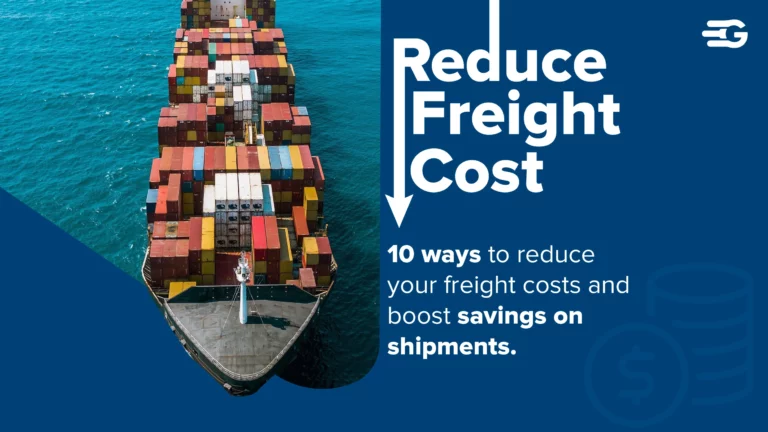How to Track Your Ocean Container in Real-time – GoComet
As a shipper, one of the best ways to minimise risks and unpleasant surprises when shipping your goods is to keep a close track of your shipment’s movement. Undoubtedly, the key to running a smooth supply chain is to have real-time and end-to-end visibility over the location of your cargo.
Earlier, logistics managers had to manually visit websites of shipping lines or make calls to their freight forwarders and key in the booking number for every container, each time to keep track of all the shipments.
Besides, the intervals at which these sites would update their data were not known and often led to inaccurate information about the container’s location.
Fast-forward to the present day, and technological advancements have simplified the process by a thousand folds, making it possible for companies to track sea shipments in real-time effortlessly.
New Age Container Tracking Systems
The emergence of state-of-the-art container tracking systems has made it possible to get timely, live updates on the exact location of your freight. The market is flooded with online tracking tools that allow real-time container tracking and enable you to deal with any re-routing or delays proactively.
However, when choosing a container tracking system, you should choose one that auto-notifies you about the different changes in your shipment’s status.
Such a tracking system will give you timely updates every time your shipment achieves a milestone in the logistics and transportation process.
Some of the most critical status changes that you should look for are:
- When the container leaves your facility
- When the container arrives at a terminal and is ready for the customs clearance process
- When the container is loaded onto the carrier at the port of origin
- When the carrier carrying the container departs the port of origin
- When the carrier arrives at the port of transhipment (if there is one)
- When the carrier departs from the port of transhipment
- When the carrier arrives at the port of destination
- When the consignee receives the shipment
Let’s take a look at common acronyms used in container tracking. These acronyms are also widely used in the sea freight industry.
ETD (Estimated Time of Departure): It is used to indicate the day on which the container is supposed to depart from the Port of Loading (POL)
ETA (Estimated Time of Arrival): It is used to indicate the day on which the container is supposed to arrive at the Port of Discharge (POD)
T/S (Transshipment): It is used to indicate when the container arrives at a connecting port between the POL and POD.
POL (Port of Loading): It is used to indicate the port of origin where the container is first loaded on to the ship.
POD (Port of Discharge): It indicates the destination port where the container is unloaded from the vessel for delivery to the consignee.
Numbers you can use to track containers:
There are two key things you need to track a container, a tracking number which could be your container number or booking number or Bill of Lading number and access to an intelligent container tracking system.
- Track shipment by container number:
All shipping containers have an alphanumeric sequence assigned to them, which forms the container number. This number is unique to the container, and you can use it to identify and track your container’s movement. Shipment tracking by container number is one of the most commonly used methods of container tracking.
- Tracking shipment by booking number:
A booking number refers to the value assigned to the reservation of space on the carrier. This number, too, can be used to identify and track the status of your shipment. You can get this number from your carrier or freight forwarder.
You can even find this number on the receipts or invoices, etc. generated after confirming a reservation.
- Tracking with Bill of Lading number:
A Bill of Lading is a legally binding document issued by the carrier to the shipper. Bill of Lading number refers to a unique number that appears on this document.
It is issued when the carrier accepts your cargo for shipment. Most of the online container tracking systems allow you to track shipments using the BL number.
GoComet real-time container tracking software
Auto-capture every movement of your shipment:
GoComet’s Container Tracking platform will automatically record the status of your shipments in real-time. The system will also help you to assess carrier performance by comparing planned milestone dates with actual events.
Automated updates straight to your inbox:
With GoComet’s innovative tracking solution, you don’t need to visit countless shipping websites to get an update on the whereabouts of your shipments. The system will auto-capture important journey milestones and send timely, automated updates straight to your inbox.
Improve customer relationships:
A unique feature of the system is that it allows you to share tracking data with your customers for their specific shipments. This provides detailed journey updates to your customer on their orders and improves their overall experiences through unprecedented transparency.
Comprehensive information on a single integrated dashboard:
With GoComet, you can gain 100% clarity across all your shipments. Besides, you can leverage the platform’s predictive analytics and drive cost savings through data-driven decisions.
What’s more?
We are also freely sharing a lite version of our container tracking tool with you. To get an instant update on your cargo location, track your container with various shipping lines for free.
If you would like to learn more about GoComet’s real-time container tracking software and experience unprecedented transparency over your supply chain, feel free to get in touch with us here.







